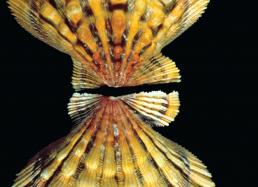Bivalve Basics
If you’ve cracked open a clam, slurped down a scallop, or pried open an oyster to look for a pearl, then you’ve met a bivalve—they’re members of the mollusk class with two half-shells that hinge together to house a soft-bodied animal. Bivalves can be found just about everywhere, from the deepest oceans to the shallowest freshwater streams in your backyard. And with about 20,000 living species, they outnumber most other animals in the sea!
Economic & Environmental Value
For such small organisms, bivalves play a big role in our lives. They provide a cheap and staple source of protein for many coastal regions, and yet may grace the menus of only the priciest seafood restaurants in urban areas. Not to mention that many of our favorite fish—as well other animals like certain birds, otters, and more—live on a diet made up mostly of these mollusks.
And because most bivalves are filter feeders, meaning that they siphon their food from the water, they’re great indicators of water quality. Plus, their importance in the ornament industry for the pearls and beautiful shells they produce can’t be understated, either.
Evolutionary Value
Beyond their economic and environmental value, bivalves and other mollusks are treasured by the scientific community for their ancient histories—they've been on this planet for around 500 million years, much longer than humans. Their hard shells fossilize amazingly well, preserving details that tell us a great deal about their musculature, gills, and other soft parts.
Armed with this information, we can trace the family tree of bivalves to learn how they’re related to one another, how they’ve adapted to their environment, and how they’re affected by habitat changes over time. Plus, because we can track their evolution much farther back than most other animals, studying their DNA helps us understand how genes—many of which we share in common with mollusks—evolved over time!


